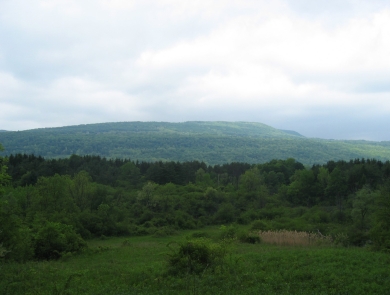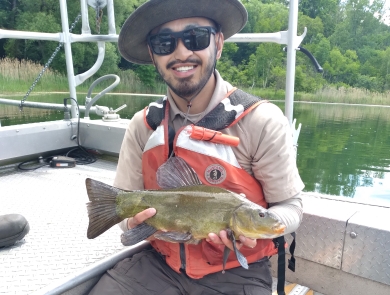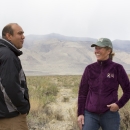About Us
Our Ecological Services Field Office is comprised of talented staff working to conserve, protect, enhance, and restore the fish, wildlife, and plant resources within New York State. Our staff are highly trained and experts at working with at risk and endangered species, providing technical assistance related to conservation planning and renewable energy, environmental contaminants and natural resource damage remediation, as well as conducting cutting edge aquatic research, environmental restoration, and community outreach and education.
New York is an incredibly environmentally diverse state: the dynamic Atlantic and Great Lakes coastlines, the mountains of the Adirondack and Catskill regions, the rolling hills, valleys, and lakes of the Finger Lakes region, the lake plains of the western region, forest and rivers of the Allegheny highlands, and the great rivers. With such a unique variety of habitat comes great biodiversity and the need to protect it. For such a large undertaking, our staff work closely with individual landowners as well as local, state, Tribal, and other federal organizations to achieve mutually agreeable conservation outcomes.
What We Do
We administer the Endangered Species Act, working with experts in the scientific community to identify species on the verge of extinction and to build the road to recovery to bring them back. We work with our partners in federal and state agencies, tribes, local governments, the business community, and private citizens to help protect important habitat, and help increase species' populations and reduce the threats to their survival so that they can be removed from federal protection.
We provide guidance and expertise to avoid and minimize impacts to wildlife for projects such as wind farms and large scale transportation developments meeting our society's growing energy and transportation needs. Our environmental contaminant specialists review project plans, licenses, and even proposed laws and regulations, to avoid or minimize harmful effects on wildlife and habitats. In cases of significant releases of hazardous waste, they work in the field to pinpoint sources of pollution and investigate effects, using this data to secure compensation for lost or damaged wildlife and habitat.
When we protect species and habitats, we conserve the natural resources on which we all depend. We ensure that wetlands persist to protect us from storms and filter our water. We conserve for future generations a continued source of land. Wild things and wild places are part of our shared history. They are part of the natural foundation of the lands we call home.
Our Organization
The New York Field Office is part of the U.S. Fish and Wildlife Service’s Ecological Services Program. We implement reviews of Federal construction projects, endangered species planning and recovery efforts, environmental contaminants research and remediation, habitat restoration, fisheries enhancement and research, conservation planning assistance, through a variety of conservation partnerships and administration of grants. Below are the national program pages for programs conducted by our office - for New York specific information on these programs (and others), please visit the "What We Do" section, above.
Our Species
Federally threatened and endangered species within New York State receive focused research, protection, and consideration from our biologists.
Our Library
Explore documents pertaining to past and on-going research and projects within our office, as well as helpful resources that may be of use to individuals or local landowners.











